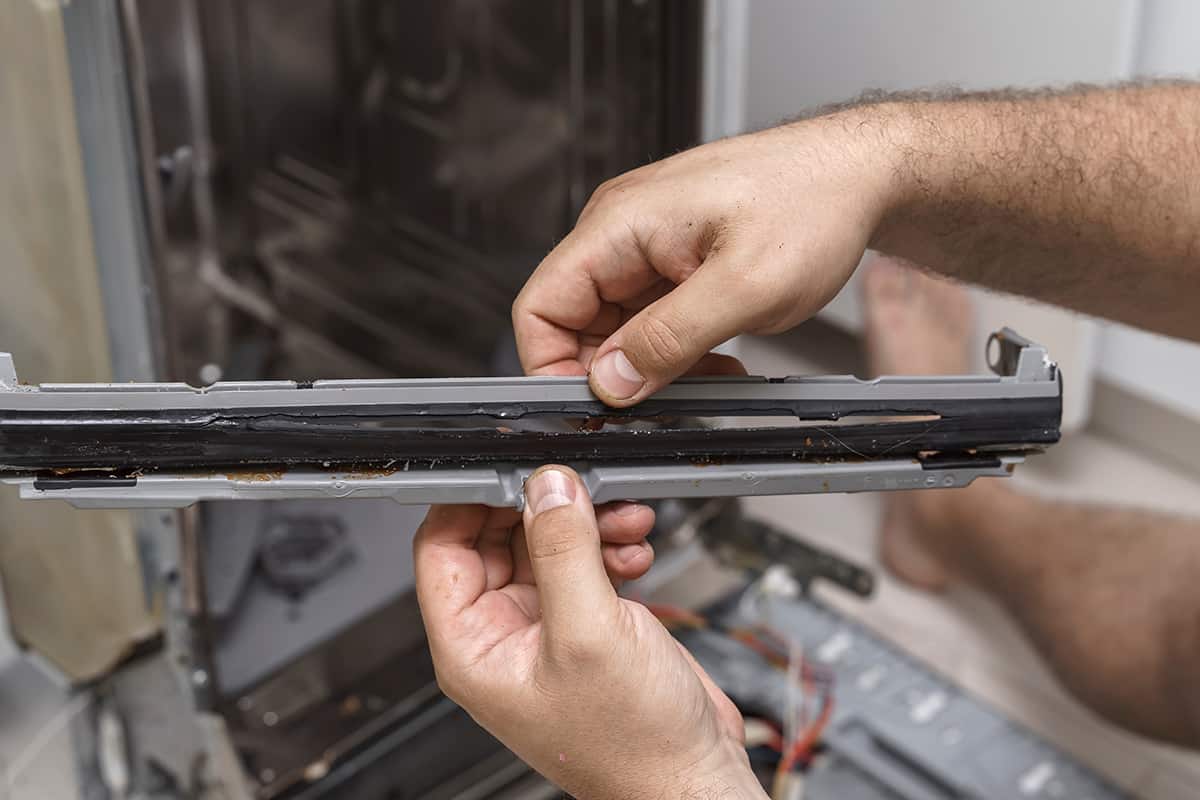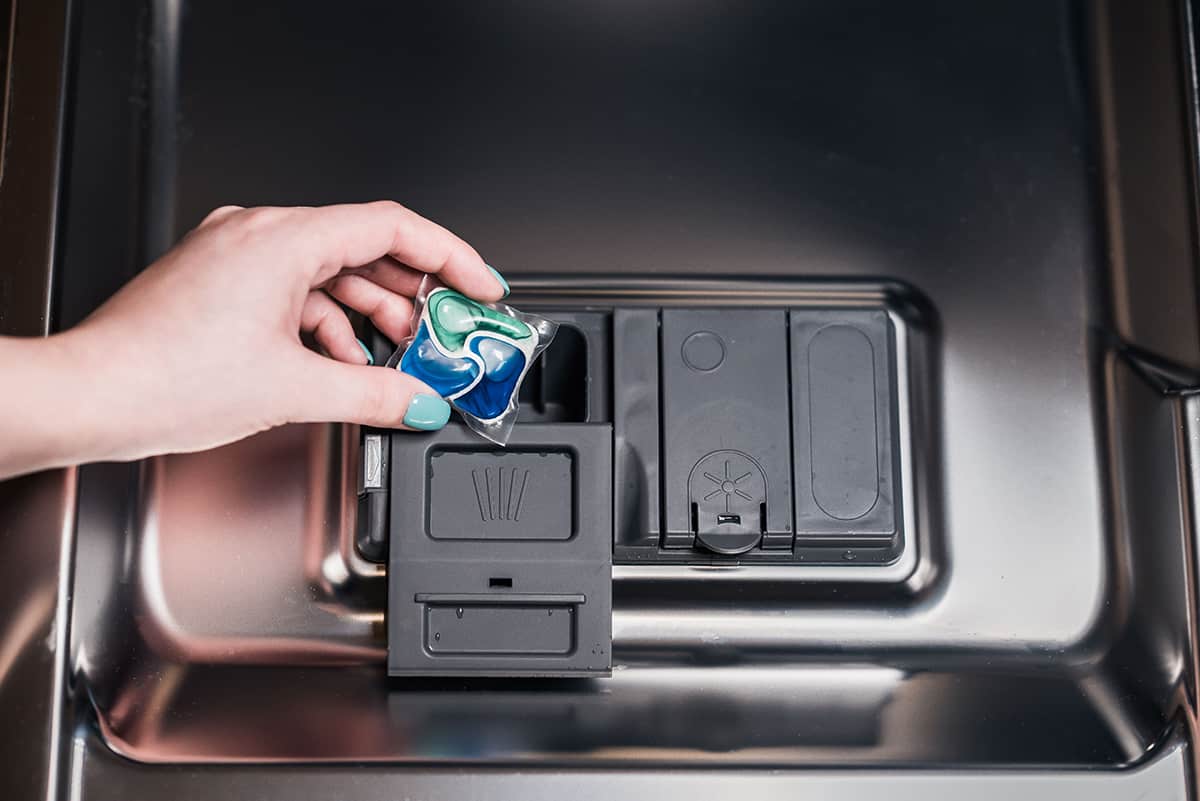There’s nothing more annoying than having to wash a mountain of dishes by hand, which is why you probably invested in a trusty dishwasher. However, there might come a time when your dishwasher won’t dispense soap for one reason or another. So, what can you do to fix your dishwasher’s broken soap dispenser?
First, you should look for the root cause, which may be a mechanical issue, such as a worn-out door seal, a damaged latch, or a broken spring. Other times, the cause might just be a buildup of gunk that prevents the soap dispenser from shutting.
Only in extreme cases will you have to replace any parts, which is why looking for the cause of the problem is so important. Below, I’ll describe the various reasons why your dishwasher’s soap dispenser may be broken, as well as how to troubleshoot the trouble.
Common Causes of Broken Dishwasher Soap Dispenser
Dishwashers are one of the most magnificent home appliances you can get to make your life a lot easier. That said, it’s not uncommon for dishwashers to experience technical difficulties, such as a faulty dishwasher soap dispenser. In the event that the dispenser is on the fritz, there’s not very much your dishwasher can do to give your dishes a sparkly-clean surface.
But before you go and replace your dishwasher unit, you should inspect it to determine whether or not it’s still salvageable. A broken soap dispenser isn’t the end of the world as most of its causes have quick fixes. Below, I’ll explain what those causes are, as well as what you can do to resolve the issue.
Worn-out door seal

The door seal, which is also known as the gasket, is the rubber ring that lines the outer edge of the soap dispenser’s hinged door. It provides a waterproof seal that prevents moisture from entering the dispenser until the machine is ready. Over time, especially with infrequent use, the door seal might begin to deteriorate or, at the very least, dry out. This can cause the soap dispenser to not close properly, resulting in what appears to be a broken dispenser.
Replacing the seal is a quick process that should be done about once every 2-3 years, depending on how quickly it wears out. Alternatively, you can prevent the seal from drying out by applying a layer of Vaseline on the entire surface of the door seal.
Damaged dispenser latch
Another important part of the soap dispenser assembly is the latch door. It keeps the dispenser’s lid down when shut. However, it can only do so when the latch’s grooves are perfectly aligned with the lid. If it isn’t, your dishwasher might register that the soap dispenser is on the fritz.
The dispenser latch on most dishwashers is made of thin plastic, which can crack over time or even become warped due to the extreme temperatures inside the tub. It might also snap off completely when applying excessive force. If the latch doesn’t catch onto the lid of the dispenser, you might need to swap it out for a new one.
Misaligned soap dispenser cap
The soap dispenser’s cap prevents the spraying arm from getting into the soap container, which may prematurely create suds before the appropriate cycle. Like the dispenser latch, the cap is prone to becoming damaged and warped over time, especially when users do not pay special attention to the component’s brittleness.
Take a close look at the cap and make sure that it produces a tight seal on the soap container. If it doesn’t, there’s a good chance that it might have bent out of shape due to extreme temperature changes during hundreds of wash cycles. In which case, you might have to pick up and install a new cap.
Buildup in the soap dispenser
Over time, you might notice a buildup of soapy residue around the dispenser’s door and latch. This is possibly due to overfilling the soap dispenser on occasion. When the detergent hardens, it can prevent the latch from swinging freely and the door from shutting completely, which will cause the dishwasher to register it as an opened latch.
When this happens, the dishwasher might not spray water into the soap dispenser to introduce suds to your dishes. So, using a soaked clean towel, gently wipe away the soapy residue around the soap dispenser and check whether the door and latch work properly.
Faulty wax motor
Newer dishwasher models come with a wax motor that determines when to dispense soap. It uses wax to power a piston that swings the dispenser’s cap open, forcing the soap to spread around the tub and get all over your dishes. If the wax motor fails, you will need to replace it.
Use a multimeter to determine whether or not there is an electric current running into the motor. If not, you will need to swap it out with a new one. Wax motors typically last the entire lifespan of the dishwasher, but if it fails prematurely, it’s a lot more cost-efficient to replace the component than it is to purchase a brand-new dishwasher.
Do I Need to Replace the Dishwasher’s Soap Dispenser?

Whether you need to replace the dishwasher’s soap dispenser or not depends on the severity of the damage. For the most part, you can get by with minor fixes to restore the soap dispenser to its former glory. At the very most, you may have to purchase a new wax motor, though this is very rare.
However, in extreme cases, the entire dishwasher’s soap dispenser may be faulty, especially if the assembly has been warped beyond recognition. In this case, it would make more financial sense to replace the soap dispenser rather than purchase a new dishwasher unit.
Sears PartsDirect has a helpful video that explains how to replace the soap dispenser. However, if you don’t possess the technical know-how to tear the dispenser out and install a new one, I highly recommend hiring a repair contractor.
Can I Use a Dishwasher Without a Soap Dispenser?
Yes, you can. A faulty dishwasher does not mean that the dishwasher will not run a full cycle. If the lid won’t open correctly or the machine doesn’t dispense any soap at all, you can try the following solutions.
Add soap inside the dishwasher
Before running a wash cycle, try adding a bit of detergent inside the machine. The detergent will mix with the water, which will get sprayed onto the surface of your dishes. However, this solution will not produce sparkly-clean dishes since it will dissolve at a faster rate than it would inside a soap dispenser. You can also place tablets at the bottom of the dishwasher’s tub for similar effects.
Pre-soap your dishes
This isn’t a direct solution to the problem since there is more manual labor involved. However, if the soap dispenser is acting up and you don’t want to go through the trouble of fixing/replacing it, you can manually soap up your dishes before placing them on the dishracks. After that, run a rinse cycle.
Use a tablet dispenser system
A tablet dispenser system is a separate tool that you can place inside your dishwasher. Follow the instructions on the product’s packaging to figure out where to install the dispenser for optimal soap distribution.
This system can hold several tablets at once, so you won’t have to worry about refilling your dishwasher with soap for future cycles. These products are a bit pricey, but they’re convenient at a lot less stress-inducing than replacing a broken soap dispenser.






